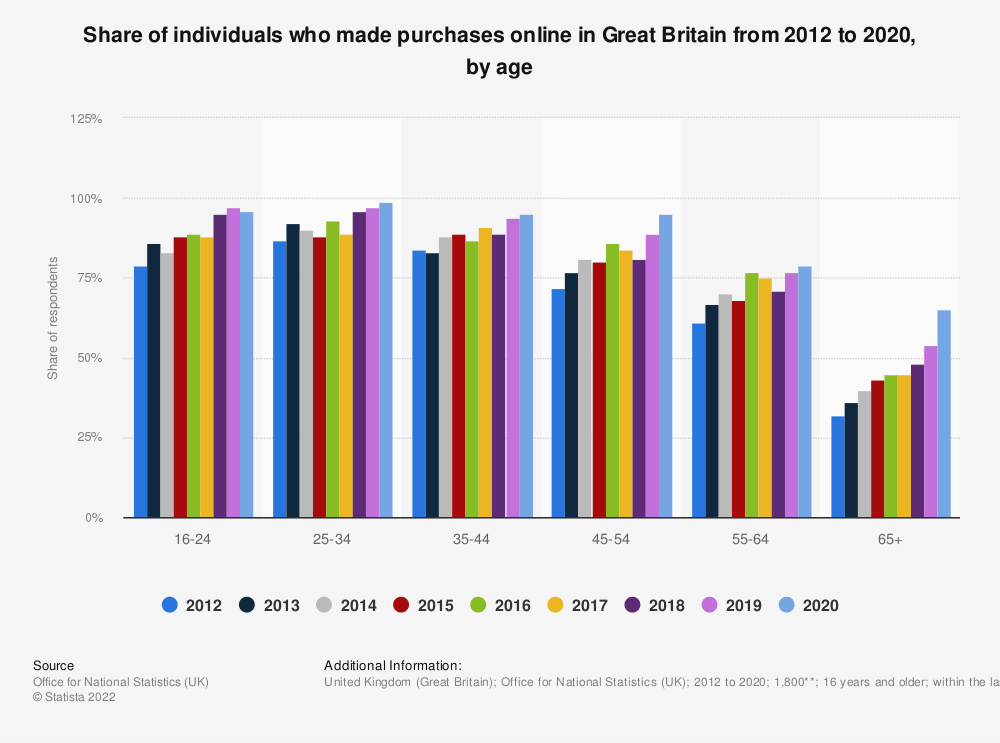It’s safe to say things will never be the same after COVID-19. When the pandemic materialized, many of us expected to go back to normal within a few months. Today, nobody knows how long it will last or what the final economic toll will be, but we’re all going to need to get used to the emerging realities that come with it.
Does this “new normal” change how we shop online and interact with brands?
Yes – and web accessibility is key.
With countries around the world imposing some level of lockdown or restrictions, the pandemic has, unsurprisingly, given a massive rise in e-commerce sales and significantly increased the importance of digital customer experience. With non-essential stores closed for a period of time in many countries, digital has been the only channel many brands can use to engage their customers.
While this has often not fully compensated for the loss of retail sales, it has helped many brands survive – and to shift their investment into digital experiences to best help maximize the growth in e-commerce.
New normal brings new generations of customers
Another consequence of the pandemic is that it’s driven people who would’ve rarely shopped online previously to start doing so. The caveat: Many sites and UX only addressed web accessibility as a government requirement, spending little time thinking about how design affects people differently.
With governments advising the elderly or vulnerable to self-isolate for long periods of time and to minimize their contact with others, there’s been a significant reduction – or complete ceasing – of their visits to retail stores. Without in-store shopping, these populations have turned to e-commerce – sometimes for the first time.
A recent survey carried out by Statista and released in August 2020 showed that the use of online shopping in those aged over 65 in the UK jumped to 65% in 2020, up from 54% the year before.
I’m confident saying that the increase will be even bigger by the end of 2021.
While statistics show that online shopping in this age group has been growing year on year for some time, the jump in 2020 was very noticeable.
Web accessibility challenges: A real-life example
One thing we don’t yet know is how changes in behaviors driven by the pandemic will continue once it has finished. Only time will tell, but it’s generally accepted that we’re likely to have some kind of long-term effect on consumer behaviors. If brands want to maintain their newly discovered audiences, they must incorporate web accessibility into their efforts.
A perfect case in point is my elderly mother-in-law.
Before the pandemic, my mother-in-law had never shopped online, considering it far too complicated. COVID-19 forced her to isolate, and with little ability to safely shop for groceries herself, she ventured into the world of online grocery shopping.
She was absolutely amazed when bags of food were delivered to her door a few days later. Though she often calls my wife asking for help when she’s ‘stuck’ on a website, she says that she will never go back to shopping in stores.
Many of you reading this article will have shopped online for groceries. Most grocery websites pack as many products onto the screen as possible, cramming as much as they can into that valuable real estate.
Going through the checkout, you’re often bombarded with offers and suggestions – much the same as when you visit supermarkets in person. Supermarket margins are extremely low and therefore they try everything they can to get you to convert and increase your order value.
Customers who are familiar with shopping online are able to navigate through this experience, but it can be very daunting for those customers who are not.
This change in behavior poses UX designers with a new challenge.
So in this new digital reality, what is web accessibility? How do UX designers adapt?
It’s safe to say that web accessibility is primarily viewed as a compliance requirement, similar to regulations like GDPR.
While it’s true that web accessibility and usability can go hand-in-hand, I don’t believe most brands consider accessibility as something that can have a significant impact on KPIs like conversion rate or average order value.
Before the pandemic, I probably would’ve agreed but now, I’m not so sure.
Brands will often create personas of different customer groups to help them understand how these different personas will interact with them. I suspect most don’t seriously consider – or design for – personas of elderly or differently-abled customers, yet these are now huge groups of customers who are now much more likely to shop online. And they should be able to do so with the same ease of individuals without accessibility challenges.
You may have seen telephones like this before, or even purchased one. The buttons are purposefully large for users who may be partially sighted or struggle with dexterity. It has a hands-free option and a ‘loud’ button for users who have difficulty hearing.
The phone has a single purpose and is designed to be usable and accessible to a specific group of users.
Can you imagine how daunting it must be to navigate a grocery website for someone who needs to use a telephone like this? Could some brands benefit from building web experiences like this example?
COVID has abruptly turned a group of customers into new online customers, and brands should now start to seriously consider how accessibility affects them.
Web accessibility should change from a compliance requirement to an important business requirement
Accessibility will now have a much bigger impact on KPIs than ever before.
Using the example of grocery websites, supermarkets should now consider how they could adapt their website to be less busy and complex for this new customer persona. Here are a couple of ways they could go about achieving this:
- We’re used to sites that allow us to view items in a list or a grid, but consider having a web version of that big-buttoned telephone.
- Contemplate a checkout that doesn’t bombard customers with offer after offer, but allows them to quickly and seamlessly complete the transaction with just a few clicks.
All brands must consider the importance of web accessibility and look to understand this group of customers more. E-commerce is no longer just the domain of the younger generations. COVID-19 has brought a whole new and important customer persona to e-commerce, so investing in accessible experiences will pay dividends.



